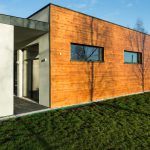
Wisconsin homeowners face tough decisions when choosing from these common exterior siding options:
- Fiber cement
- Vinyl
- Metal
- Wood and engineered wood
- Board and batten
Between subzero winters, humid summers, and constant freeze-thaw cycles, few materials can handle the state’s extreme temperature swings while maintaining appearance and strength. Choosing the wrong siding can lead to warping, cracking, and costly moisture damage that weakens your home’s protection over time.
At Prairie Exteriors, we’ve spent over 60 years helping South-Central Wisconsin homeowners choose siding built to withstand our climate. Every product we install is tested for long-term performance in Midwest conditions—because we only recommend materials we’d trust in our own homes.
Our siding repair in Madison, WI specialists are ready to protect your home with materials proven to withstand Wisconsin’s toughest weather conditions.
5 Modern Siding Materials: Performance in Wisconsin’s Climate
Today, the types of house siding extend far beyond traditional vinyl and wood, offering Wisconsin homeowners advanced materials engineered to handle our specific climate challenges. From high-performance composites to innovative metal systems, modern siding technology provides superior protection against ice dams, moisture infiltration, and extreme temperature fluctuations that define our regional weather patterns.
Fiber Cement Siding: The Wisconsin Weather Champion
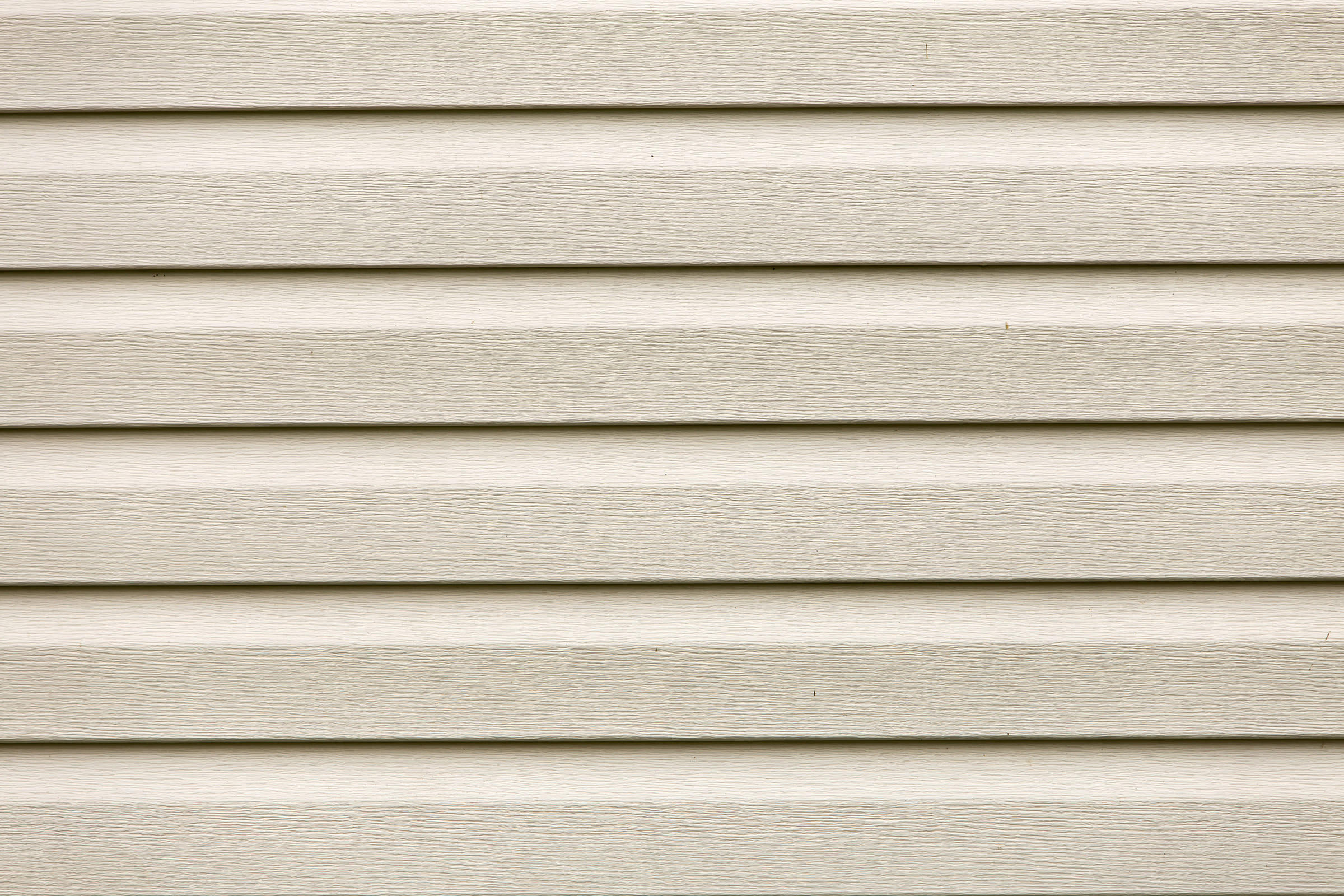
Fiber cement siding provides lasting protection against Wisconsin’s temperature swings, ice, and moisture. Its cement-sand-fiber blend prevents cracking, warping, and rot that often shorten the lifespan of vinyl or wood.
💡 Consider a homeowner in Middleton deciding between vinyl and fiber cement after repeated hail damage. By choosing fiber cement, they invest in siding that can better resist future storms—reducing repair costs and maintaining curb appeal for decades.
Vinyl Siding Innovations: Modern Solutions for Energy Efficiency
Modern insulated vinyl siding transforms energy efficiency for Wisconsin winters by incorporating foam backing that significantly reduces thermal bridging. This technology can substantially decrease heating costs compared to traditional vinyl, essential for homes facing months of sub-zero temperatures.
Today’s vinyl formulations feature advanced UV inhibitors and impact modifiers that prevent the color fading and cracking issues that plagued earlier generations. High-quality vinyl now maintains color integrity for decades and resists impact damage from Wisconsin’s frequent hailstorms.
Cost-effectiveness remains vinyl’s strongest advantage for Wisconsin homeowners, with quality insulated vinyl systems costing significantly less than fiber cement while delivering comparable energy efficiency. For families prioritizing budget-conscious solutions without sacrificing performance in our climate, modern vinyl represents an excellent value proposition.
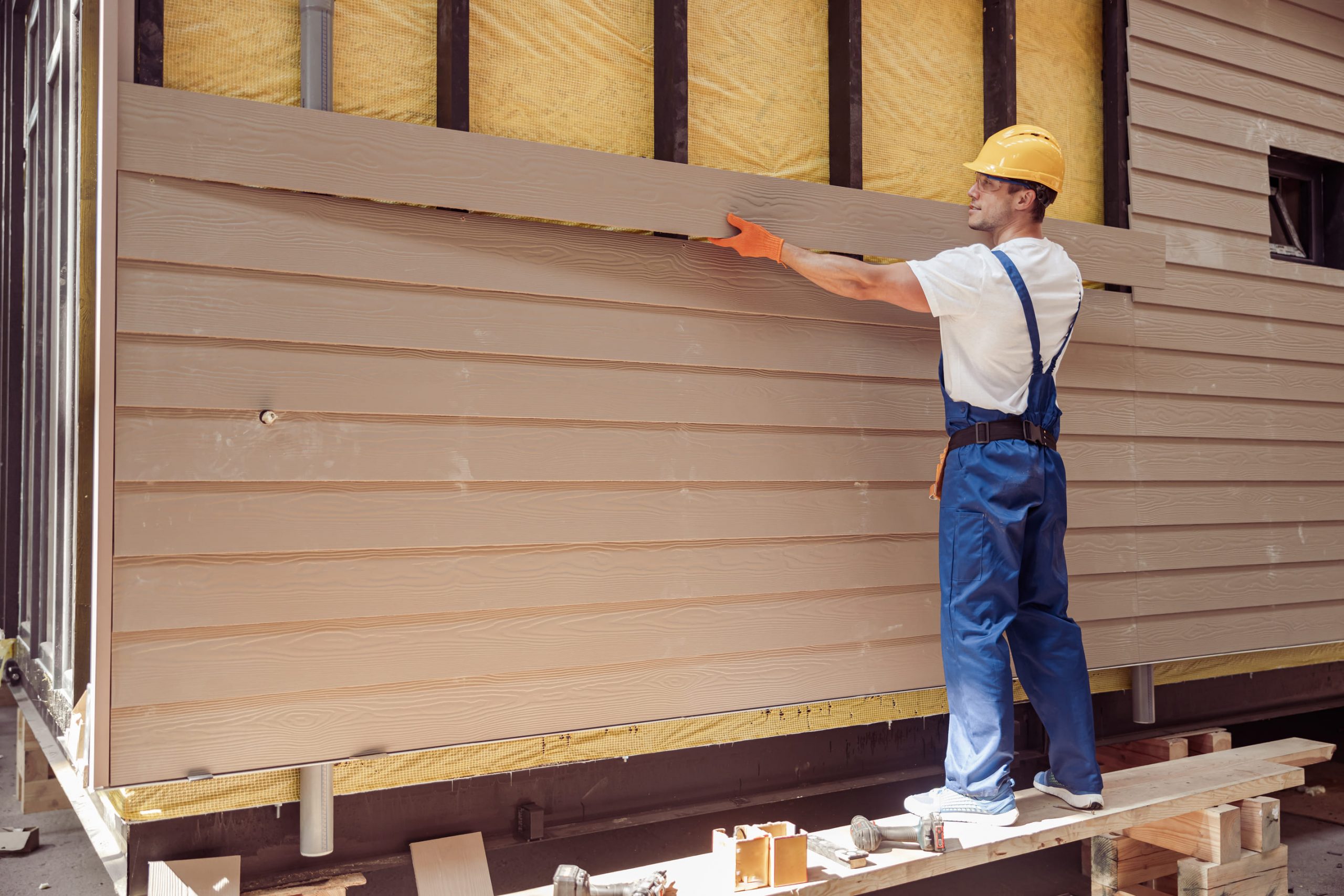
Metal Siding Options: Durability Meets Modern Aesthetics
Metal siding delivers unmatched durability against Wisconsin’s most severe weather events. Here’s how different metal options perform in our climate:
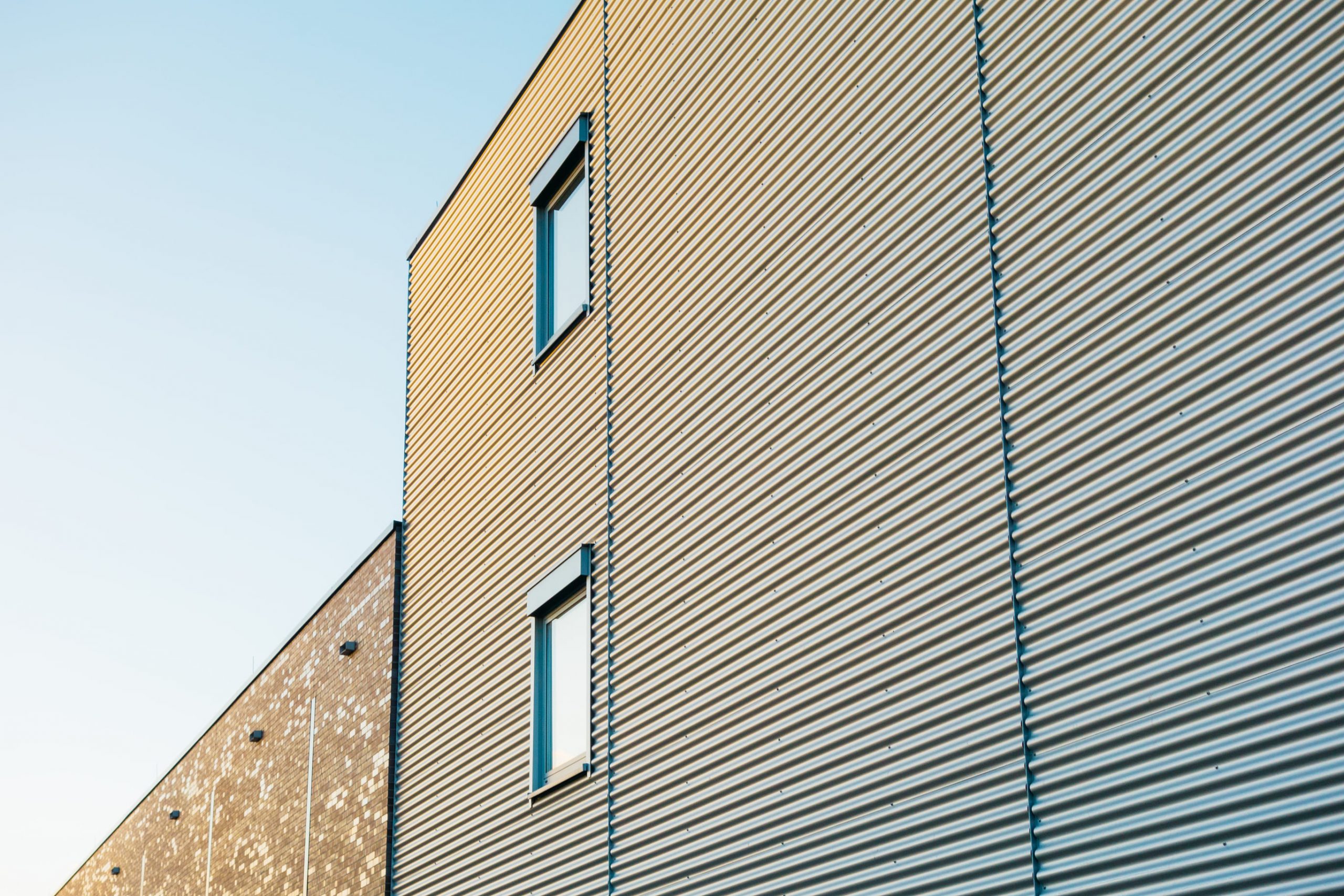
- Steel siding strength withstands high wind loads and impact resistance that handles large hail—critical for homes in Wisconsin’s storm-prone areas
- Aluminum siding’s corrosion resistance makes it ideal for areas with road salt exposure, while its lightweight properties reduce structural stress during heavy snow loads
- Standing seam profiles shed snow and ice efficiently, preventing the ice dam formation that plagues many Wisconsin rooflines and siding installations
- Protective coating technologies now include advanced finishes that resist fading and chalking through decades of UV exposure and temperature extremes
| Metal Type | Cost per sq ft | Lifespan (years) | Wisconsin Performance Rating |
| Steel Siding | $8-15 | 40-70 | Excellent |
| Aluminum Siding | $6-12 | 30-50 | Very Good |
| Zinc Siding | $12-18 | 80-100 | Outstanding |
✔️ For Wisconsin homeowners balancing long-term durability with modern curb appeal, metal siding—especially steel and zinc—offers one of the best returns on investment. Our team helps you select profiles and finishes suited to your home’s exposure and style.
Wood and Engineered Wood: Traditional Beauty with Modern Technology
- Traditional wood siding faces significant challenges in Wisconsin’s climate, including moisture absorption leading to rot, insect infiltration, and expansion/contraction issues from extreme temperature swings. Cedar and pine require intensive maintenance—typically staining or painting every 3-4 years—to survive our harsh conditions.
- Engineered wood solutions incorporate advanced treatments like zinc borate for insect resistance and moisture-resistant binders that dramatically improve performance. These products combine wood fibers with synthetic materials, creating siding that looks authentic while resisting Wisconsin’s climate challenges more effectively than solid wood.
- Maintenance requirements remain substantial even with engineered options, requiring regular inspection for moisture infiltration points and refinishing every 5-7 years. Long-term costs often exceed other materials when factoring in Wisconsin’s harsh conditions that accelerate wear and necessitate more frequent maintenance cycles.
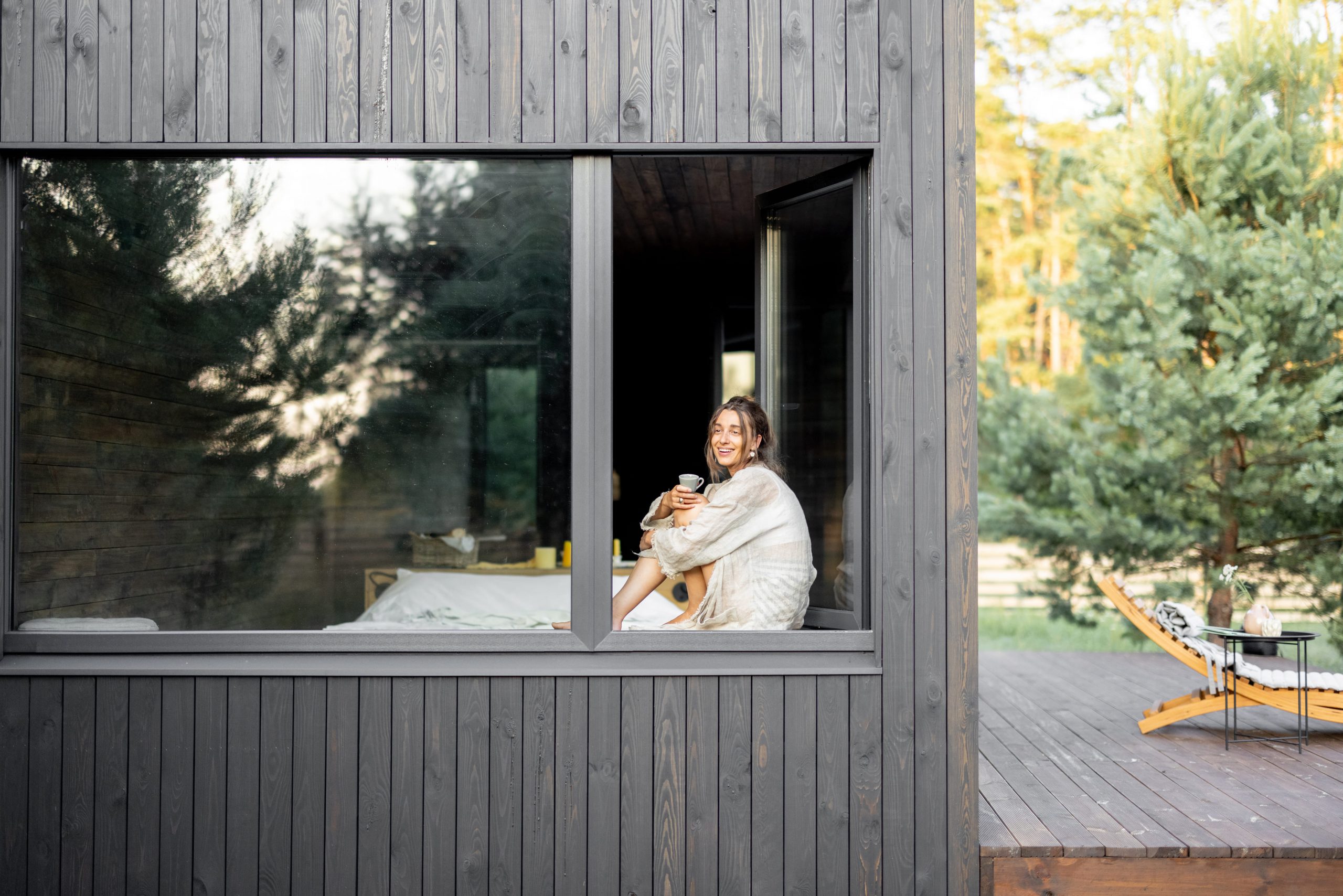
💡 Imagine a historic Madison home needing to preserve its 1920s charm while preventing recurring ice dam damage. Choosing engineered wood siding with modern moisture barriers could maintain the home’s classic look while reducing costly winter maintenance. At Prairie Exteriors, we often recommend this approach for homeowners balancing architectural integrity with weather resilience.
Board and Batten Siding: Timeless Style for Wisconsin Homes
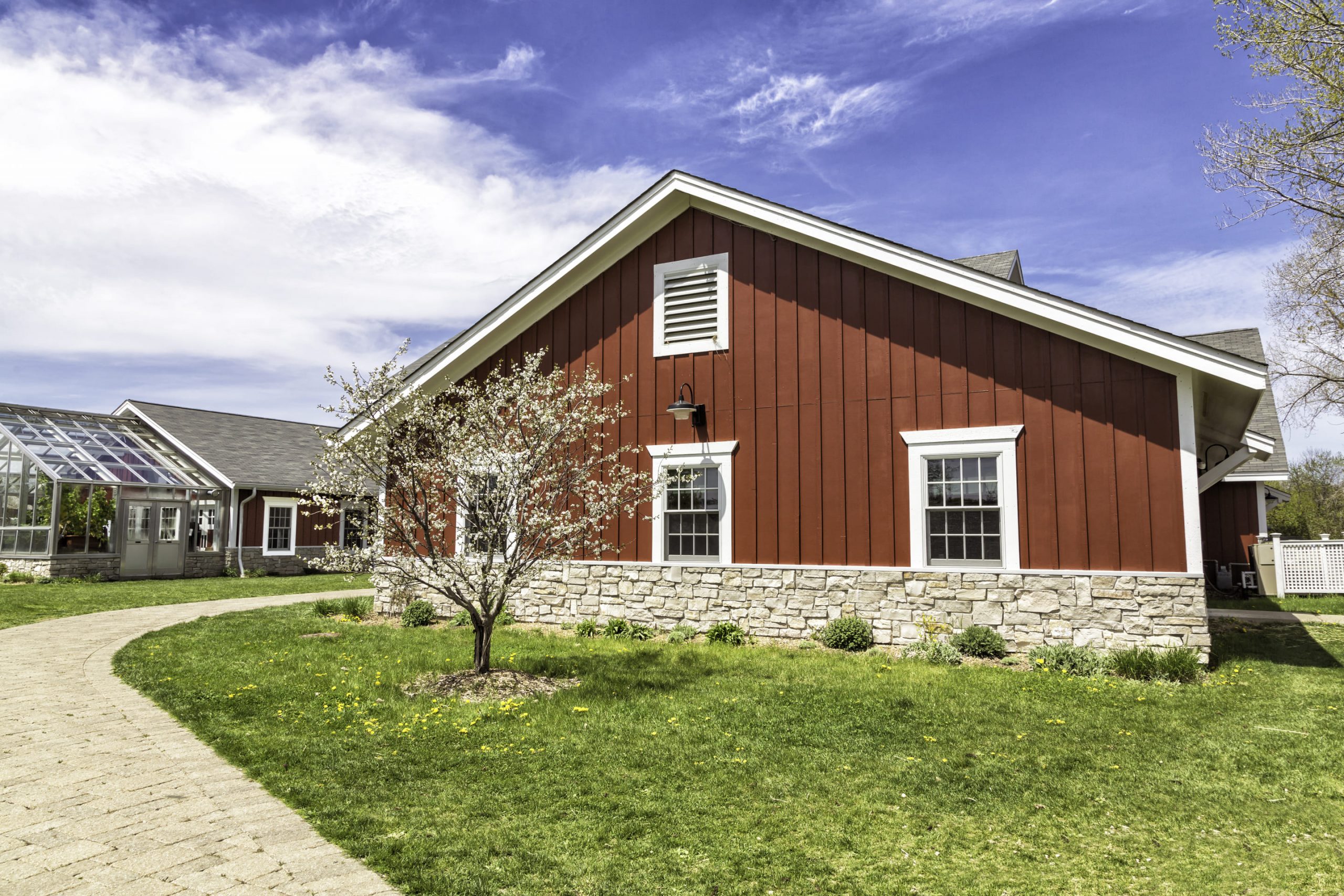
Board and batten siding creates stunning vertical lines that complement Wisconsin’s architectural heritage. This classic style works exceptionally well with modern materials like fiber cement or engineered wood that can handle our climate’s demands while maintaining the traditional aesthetic homeowners love.
Installation techniques specific to Wisconsin require proper moisture management behind vertical joints, where ice and snow can accumulate. Professional installers use advanced flashing systems and drainage planes to prevent water infiltration—critical details that determine long-term performance in our freeze-thaw environment.
Our siding installation in Sun Prairie, WI, experts are standing by to provide a personalized assessment of your home’s exterior protection needs.
Why Wisconsin Weather Demands Specialized Siding Solutions
Wisconsin’s extreme temperature fluctuations create unique stresses on exterior siding materials. Our climate regularly experiences temperature swings exceeding 130°F annually—from winter lows reaching -30°F to summer highs topping 100°F. These dramatic shifts cause expansion and contraction cycles that destroy inferior siding materials within just a few seasons.
Ice dam formation represents one of Wisconsin’s most destructive siding challenges. When warm air escapes through inadequate insulation, it melts roof snow that refreezes at gutters, creating ice barriers that force water under siding systems not designed for such conditions. This cycle can cause thousands of dollars in damage to unprepared homes.
High-humidity summers compound winter damage through moisture infiltration that leads to mold, rot, and structural deterioration. Homes without proper vapor barriers and moisture management systems experience significantly more exterior damage in our climate compared to drier regions.
Types of Composite Siding: The Modern Solution for Wisconsin Homes
While traditional siding options like fiber cement, vinyl, metal, wood, and board and batten each offer proven advantages, composite siding represents a new evolution in exterior materials.
These engineered systems blend multiple components—such as wood fibers, polymers, resins, and cement—to overcome the weaknesses of any single material. The result is siding that offers exceptional durability, weather resistance, and design flexibility tailored for Wisconsin’s extreme climate.
- Wood-Plastic Composites (WPCs) combine recycled wood fibers with thermoplastic materials, offering excellent moisture resistance and low maintenance. Ideal for Wisconsin’s freeze-thaw climate, they maintain structural stability and resist rot or warping.
- Fiber-Reinforced Composites use glass or synthetic fibers to increase strength and impact resistance. These materials excel in high-wind regions and provide superior protection against hail and debris common in Wisconsin’s prairie areas.
- Recycled Synthetic Fiber Composites blend polymer binders with recycled fibers for lightweight, durable siding that withstands freeze-thaw cycles while maintaining appearance longer than traditional wood.
- Engineered Wood Composites utilize specially treated wood strands and weather-resistant resins to deliver authentic wood texture with enhanced stability. They perform well through Wisconsin’s humid summers and wet springs, reducing warping and cupping.
| Composite Type | Wisconsin Performance | Maintenance Level | Warranty |
| Wood-plastic composite | Excellent | Low | 15-20 years |
| Fiber-reinforced composite | Outstanding | Very Low | 20-25 years |
| Recycled synthetic fiber composite | Very Good | Low | 18-22 years |
| Engineered wood composite | Good | Moderate | 15-18 years |
💡 Additional reading: “What is composite siding?” — explore how this innovative material blends wood fibers, polymers, and resins to create durable, low-maintenance siding that performs exceptionally well in Wisconsin’s climate.
Looking for expert siding guidance? Contact us today to schedule your consultation with our Wisconsin siding specialists.
Looking for expert siding guidance? Contact us today to schedule your consultation with our Wisconsin siding specialists.
Energy Efficiency and Insulation: Maximizing Performance in Wisconsin
Energy efficiency becomes critical when Wisconsin heating bills can reach substantial amounts annually for poorly insulated homes. Modern siding systems integrate with insulation strategies to dramatically reduce energy costs:
- Thermal bridging prevention techniques use continuous insulation behind siding to eliminate heat loss paths that can significantly increase heating costs in Wisconsin’s climate.
Vapor barrier considerations must account for Wisconsin’s humidity levels that can drive moisture into wall systems, requiring specialized moisture management strategies specific to our climate zone. - Insulation integration with different siding materials varies significantly—fiber cement allows continuous insulation installation, while some materials require modified techniques to maintain thermal performance.
- Air sealing importance cannot be overstated in Wisconsin, where pressure differences from wind and temperature drive air infiltration that undermines even the best insulation systems.
Properly integrated siding and insulation systems can substantially reduce energy consumption compared to standard installations, with attractive payback periods through utility savings.
💡 Understanding R-values and siding efficiency: R-value measures how well a material resists heat flow—the higher the number, the better its insulation performance. For Wisconsin homeowners, even modest R-value improvements can make a real difference through long, cold winters.
Most siding adds some insulation, but pairing it with insulated sheathing or continuous insulation provides the greatest energy benefit. Our team at Prairie Exteriors helps homeowners choose siding and insulation combinations that maximize comfort and efficiency for Wisconsin’s unique climate.
Cost Considerations: Budgeting for Siding in Wisconsin
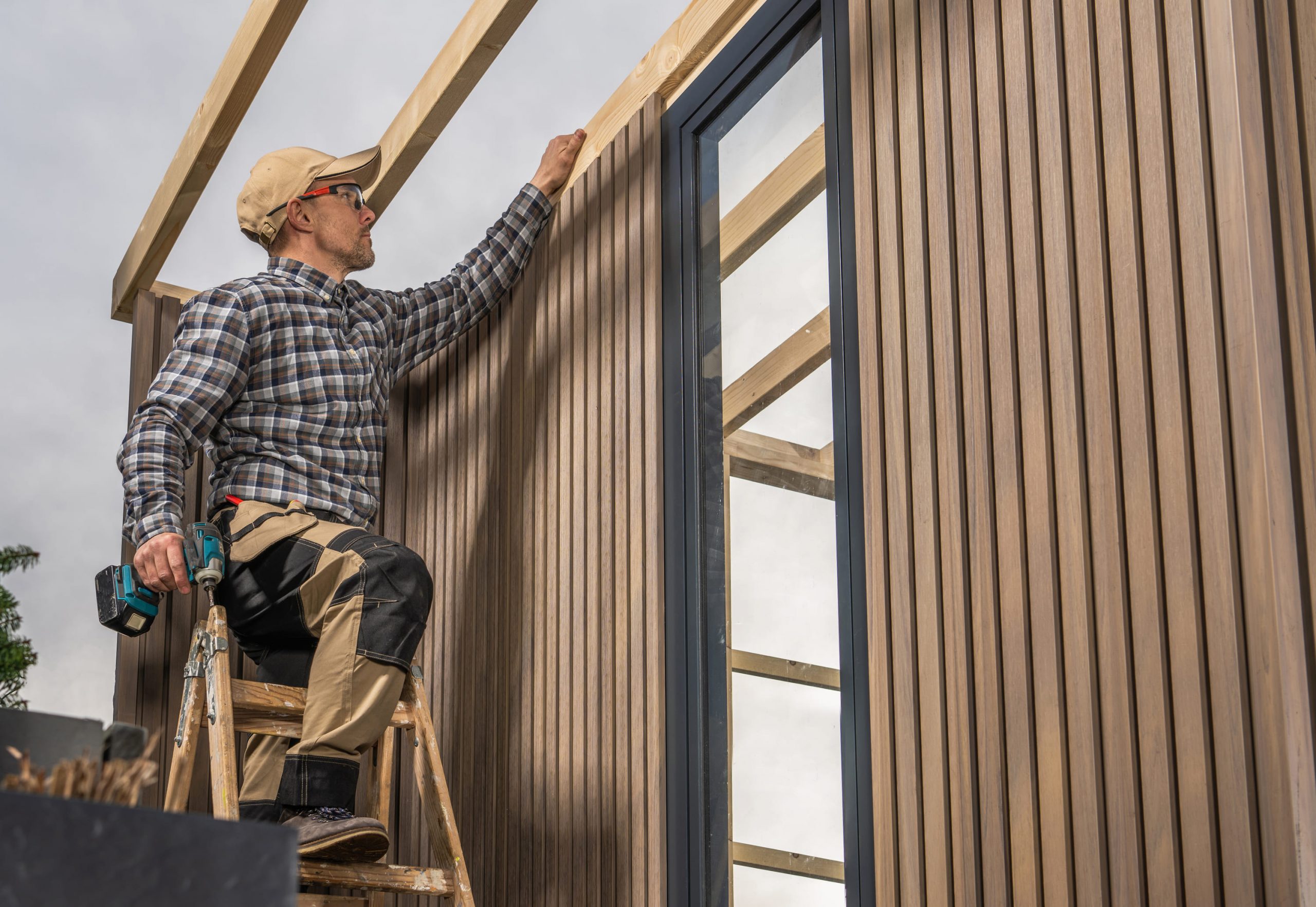
Initial investment ranges vary dramatically based on material selection and Wisconsin-specific installation requirements. Quality vinyl siding systems start around $4–8 per square foot installed, while premium fiber cement ranges from $8–15 per square foot. Metal siding options fall between $6–18 per square foot, depending on material type and finish quality.
Long-term value calculations must factor in Wisconsin’s harsh climate effects on maintenance costs. Vinyl siding may require replacement every 20–25 years in our conditions, while fiber cement typically lasts 50+ years with minimal maintenance. When comparing 30-year total costs, fiber cement often proves more economical despite a higher upfront investment.
Wisconsin-specific factors significantly impact pricing, including seasonal installation constraints that can increase costs during peak demand periods, specialized moisture management requirements that add to installation complexity, and the need for materials rated for our climate zone specifications.
Installation Timing: When to Replace Siding in Wisconsin
Timing siding projects correctly in Wisconsin’s seasonal climate maximizes performance and minimizes costs:
- Spring installation advantages include assessing winter damage when it’s fresh, taking advantage of moderate temperatures ideal for installation, and completing projects before summer humidity complicates certain materials.
- Summer weather windows provide the longest installation periods, but come with premium pricing and scheduling challenges as demand peaks across the construction industry.
- Fall preparation considerations focus on completing projects before winter weather while managing shorter daylight hours that limit daily work windows.
- Winter emergency repair protocols become necessary when ice dams or storm damage compromise siding integrity, though costs typically run significantly higher than seasonal work.
Based on our project scheduling experience across Wisconsin, we’ve found that late spring (May through early June) and early fall (September to October) often offer the best balance of weather conditions, contractor availability, and overall value for homeowners planning exterior updates.
Maintenance Requirements: Protecting Your Investment in Wisconsin’s Climate
Proper maintenance extends siding life significantly in Wisconsin’s demanding climate. Here’s your seasonal protection strategy:
- Spring inspection and cleaning protocols should include checking for ice dam damage, cleaning winter salt residue that can cause corrosion, and inspecting caulking around penetrations where freeze-thaw cycles cause failures
- Summer maintenance windows provide ideal conditions for repairing any damage discovered during spring inspections, cleaning siding to remove pollen and humidity-related growth, and preparing for fall storm season
Fall preparation focuses on ensuring drainage systems function properly before winter, checking that all penetrations remain sealed, and trimming vegetation that could trap moisture against siding during the snow season
Winter damage monitoring requires periodic inspection after major storms, especially checking for ice dam formation that could compromise siding integrity, and addressing any urgent repairs before conditions worsen
✔️ Wisconsin-specific maintenance schedules should be more aggressive than national recommendations due to our climate’s intensity—most materials benefit from bi-annual detailed inspections rather than the annual schedule sufficient in milder climates.
Prairie Exteriors: Your Wisconsin Siding Experts
Prairie Exteriors brings over 60 years of combined experience, specifically focused on Wisconsin’s unique exterior challenges. Our team has weathered every type of storm our state can deliver—from devastating ice storms to severe hail events that regularly impact South-Central Wisconsin—and we’ve learned exactly which materials and installation techniques provide lasting protection.
Our service area coverage spans Madison, Sun Prairie, and all of South-Central Wisconsin, giving us intimate knowledge of local building codes, permit requirements, and the specific weather patterns that affect different areas throughout our region. We understand that a solution perfect for a lakefront home in Madison may not suit a rural property in Sun Prairie due to varying wind exposure and moisture conditions.
Schedule your consultation today to discover how our Wisconsin-specific expertise can protect your home with siding solutions designed for our climate’s demands.
We’ll assess your property’s unique challenges and recommend materials proven to perform in conditions exactly like yours, backed by warranties and installation quality that gives you confidence for decades to come.
Ready to upgrade your home’s siding? Call Prairie Exteriors at +1 608-370-2528 to speak with our local team about materials built for Wisconsin’s weather.
Ready to upgrade your home’s siding? Call Prairie Exteriors at +1 608-370-2528 to speak with our local team about materials built for Wisconsin’s weather.
Frequently Asked Questions
What permits are required for siding replacement in Wisconsin?
Most siding replacement projects in Wisconsin require building permits, especially when structural modifications are involved. Madison and Sun Prairie typically require permits for full siding replacement, with specific fees and requirements varying by municipality. Our team handles all permit applications and ensures compliance with local building codes throughout South-Central Wisconsin.
How long does siding installation take in Wisconsin weather?
Weather significantly impacts installation timelines in Wisconsin, with typical projects taking several days to over a week for average homes during favorable conditions. Spring and fall installations proceed most efficiently, while summer humidity can extend drying times for some materials. Winter installations are possible but may take considerably longer due to shorter daylight hours and weather delays.
Can I install new siding over existing materials in Wisconsin?
Installing new siding over existing materials is possible in many Wisconsin applications, depending on the condition of the underlying materials and local code requirements. This approach can reduce project costs while maintaining structural integrity, but requires careful moisture management assessment to prevent trapped moisture issues that are particularly problematic in our humid climate.
What warranty coverage should I expect for Wisconsin siding?
Quality siding materials offer substantial warranties ranging from 25-50 years, but Wisconsin installations should include enhanced weather protection clauses covering ice dam damage, hail impact, and extreme temperature performance. Prairie Exteriors provides comprehensive installation warranties that complement manufacturer coverage, ensuring complete protection against regional weather challenges.
How do I choose between materials for Wisconsin lake properties?
Lake properties face unique challenges from increased moisture, wind exposure, and potential ice damage that require specialized material selection. Types of house siding like fiber cement and high-grade metal siding typically perform best in these environments, offering superior moisture resistance and wind load capacity essential for Wisconsin lakefront conditions.



